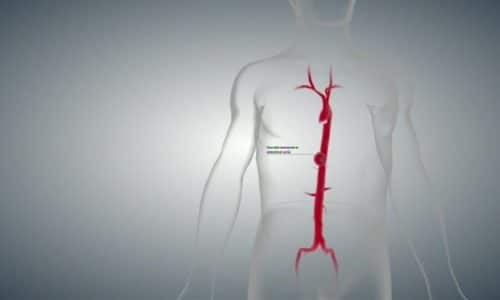What are symptoms Peripheral Neuropathy and is treatment available? |

Last article, we learned that Peripheral Neuropathy (PN) affects the peripheral nervous system, the network of nerves that transmits information from central nervous system (brain and spinal cord) to the rest of the body. It was noted that PN is not a single disease, but is a condition with over 100 causes in which transmission of information from peripheral nerves is disrupted. Today we’ll look at the specific symptoms of PN and discuss its diagnosis and treatment.
What are the symptoms of Peripheral Neuropathy? Symptoms of PN vary depending on the type of peripheral nerve (sensory, motor, or autonomic) affected. Although some neuropathies may affect all three types of nerves, others primarily affect one or two types.
Most commonly, PN affects sensory nerves. These are the nerves that are responsible for the sense of touch. Detecting heat, pain, cold, and position sense are all functions of sensory nerves. Sensory nerve involvement typically begins with the gradual onset of numbness and tingling in the feet or hands, a symptom known as “paresthesias”. This sensation frequently occurs in a “stocking” or “glove” distribution, affecting the entire foot or hand. In more severe cases, burning or shock-like pain may develop. Sensory nerve involvement resulting in the inability to detect pain is a particularly serious problem for people with diabetes, contributing to a high rate of lower limb amputations from infections and burns. When PN affects sensory nerves in the feet, people may have loss of position sense making walking or maintaining their balance difficult.
Autonomic neuropathy occurs when there is damage to the nerves that manage unconscious body functions such as blood pressure, heart rate, sweating, bowel and bladder function, and digestion. Symptoms of PN affecting autonomic nerves vary, depending on which organ or system of the body is involved. Constipation, diarrhea, nausea after eating, and bloating may develop when PN affects the gastrointestinal tract. Other symptoms that occur with autonomic PN include the inability to sweat normally leading to heat intolerance, loss of bladder control, and the inability to maintain safe blood pressure levels which can cause dizziness, lightheadedness, or even fainting.
Motor neuropathy symptoms may include muscle weakness, cramps, muscle twitching, and loss of muscle mass. In an acute type of motor neuropathy, called Guillain-Barré syndrome, severe weakness starting in the legs spreads upward sometimes causing total body paralysis.
How is Peripheral Neuropathy Diagnosed? Diagnosing peripheral neuropathy is often difficult because the symptoms are highly variable and the list of potential causes is lengthy. There is no specific test available to make the diagnosis of PN. A history of chronic illnesses, such as diabetes, as well as learning about family history, dietary issues, work environment, alcohol use, risk of HIV or other infections can provide important clues to the underlying cause. Blood tests can help with the detection of diabetes, infections, immune system disease, vitamin deficiencies, and kidney disease, all of which can lead to the development of PN. Additional testing such as MRI scanning, nerve conduction studies (NCV), and tests of muscle activity (EMG) may be required if the information found from history, physical and blood testing are inconclusive.
Is there treatment for Peripheral Neuropathy? Treatment is most effective when an underlying cause for the PN is found. For example, if the peripheral nerve damage is found to be related to a vitamin deficiency, supplying that vitamin will often stop or reverse the process. Likewise, PN due to toxins or medications can be corrected by avoiding further exposure to the offending agent. With diabetes-related PN, appropriate treatment measures and careful monitoring to keep blood sugars in an optimal range has been shown to improve symptoms and slow progression of the neuropathy. Surgery may even be the most appropriate treatment, as with PN from carpal tunnel syndrome that has not responded to conservative measures.
Nerve-related pain is a particularly common problem in the sensory type of PN. When over-the-counter pain relievers are ineffective, prescription medications including (Neurontin®), mexiletine (Mexitil®), phenytoin (Dilantin®), carbamazepine (Tegretol®) and amitriptyline (Elavil®) may be of benefit. In more severe cases, anesthetic nerve blocks may be used to block the source of the nerve pain.
When PN primarily affects motor nerves, hand or foot braces, specialized exercise programs, and physical therapy are used to help with muscle weakness.
Treatment of autonomic neuropathy hinges on its symptoms and organs affected. Overactive bladder is a common symptom when autonomic nerves controlling bladder function are affected. Medications including tolterodine (Detrol) and oxybutynin (Ditropan XL) will help with this urinary tract complaint. Other treatments are available if the neuropathy concerns other autonomic functions such as blood pressure, digestion, or sweating.
Even though most cases of PN cannot be cured, there is usually some treatment available that will help with its symptoms. The best results, however, occur with early diagnosis and treatment since peripheral nerves have a limited capacity for regeneration.
If you have any more questions just Ask Hanna, our health advisors are here to help.
Image: ©Shutterstock / okawa somchai








